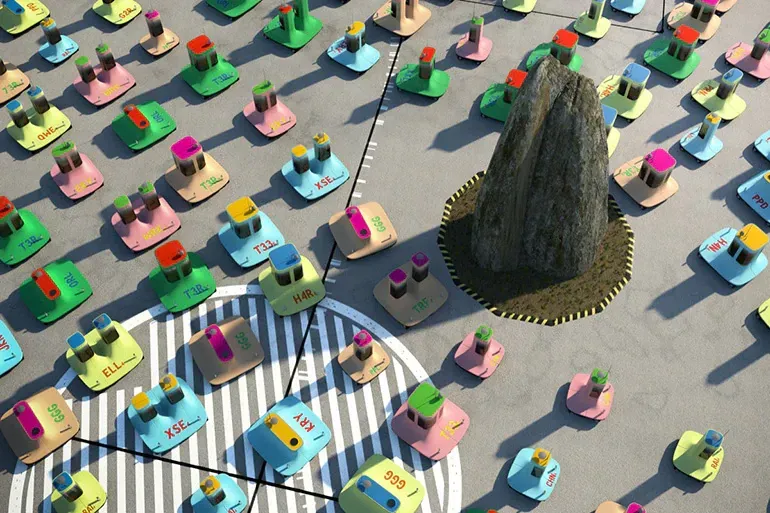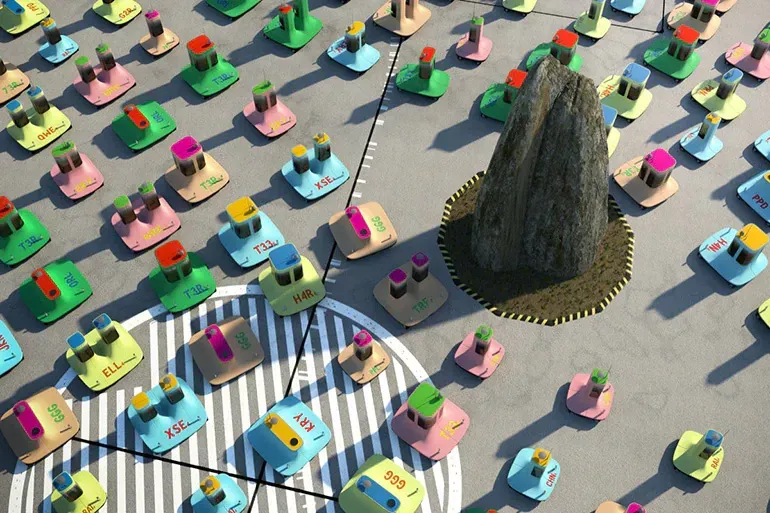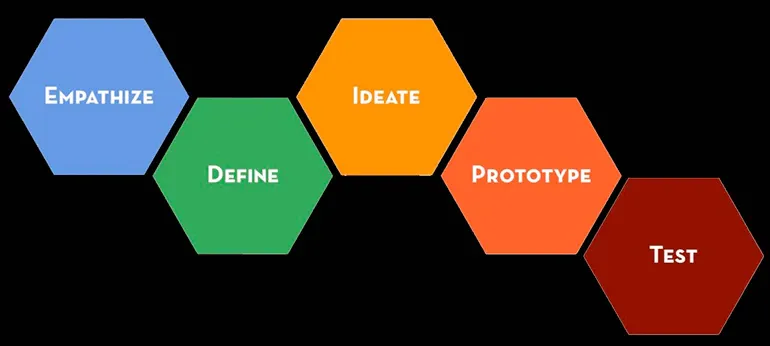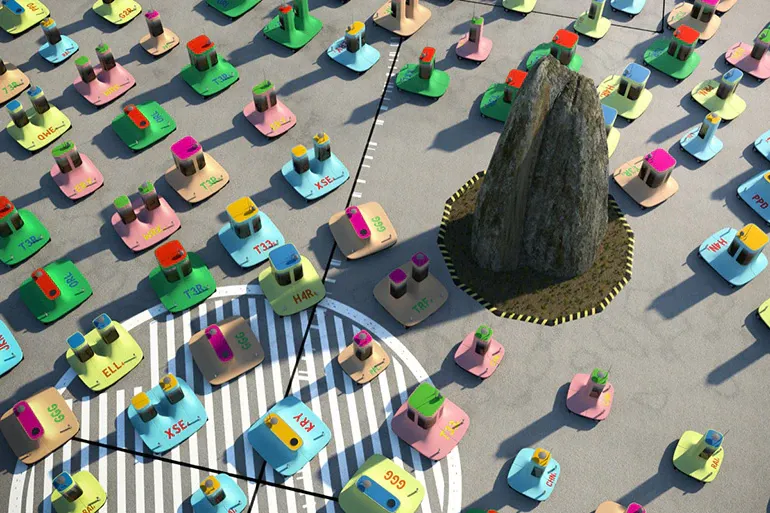Is Design Fiction the new Design Thinking?
Written by


By Dr. Sarah Elsie Baker, Media Design School
Design thinking has been a buzzword in design and business circles for many years now. Whether or not you’re involved in it, you’ve probably heard the term and wondered what it really means. One of the most vocal advocates of design thinking, Tim Brown, president and CEO at Ideo, defines the method as:
“a human-centered approach to innovation that draws from the designer’s toolkit to integrate the needs of people, the possibilities of technology, and the requirements for business success.”
Design thinking has spread beyond business contexts and is being used to problem solve in areas such as education, government, and the sciences. Even Immigration New Zealand is embracing design thinking as a way to improve user experience. At its best, the human-centred nature of design thinking can radically alter the questions we ask as designers, the emphasis on iteration and prototyping can produce highly innovative solutions, and the prescribed methods can enable non-designers to be involved in the design process. At its worst, however, design thinking is an empty phrase used by business people and designers that are themselves lacking in substance.

Design thinking process. Dschool.stanford.edu
As designers, we are attuned to changing trends and future possibilities but we seem a little bit less reflexive about fashions in design methods. I want to take a little time here to reflect on the current context, and to ponder upon what I think is on the horizon: design fiction.
Design fiction, and its bedfellows of speculative design and design futures (which all come under the umbrella of ‘discursive design’[i]), emerged in the 1990s and is most notably associated with Bruce Sterling in the US, and Anthony Dunne and Fiona Raby in the UK. Now established as a field in its own right, design fiction uses a combination of concepts, objects, and representations to create fictional narratives about alternative presents and possible futures.
For example, United Micro Kingdoms (2013) by Dunne and Raby, imagines the UK divided into four super-shires inhabited by Digitarians, Bio-liberals, Anarcho-evolutionists and Communo-nuclearists. Each imagined county has their own governance, economy, and lifestyle, and is represented by specific modes of transport particular to their way of life. Digitarians move around in self-drive digital cars, Bio-liberals in vehicles grown from yeast and tea, Communo-nuclearists live and travel in a giant hydro powered train, and Anarcho-evolutionists have genetically modified animals as well as human characteristics to aid transportation. By creating these fictional worlds, United Micro Kingdoms aims to get audiences to think about how transportation systems are intrinsically linked to political agendas.

Electric self-driving digicars on the all-tarmac Digiland. Dunne and Raby.
While design fiction and speculative design have been accused of reproducing western privileged perspectives and preaching to the choir (rightly so, in some cases[ii]), this type of approach has its advantages. By making the familiar strange and the strange familiar, design fictions can ask questions about our everyday lives that other modes of designing cannot. While this may not be appealing to the pragmatists out there, it is a highly creative way of opening up some of our most challenging problems for discussion. Critical, contextually informed, and often playful, good design fictions are participatory. Rather than preaching to us about what the future will be, they offer possibilities and let us consider it for ourselves. In Bruce Sterlings’ words, design fiction “suspends disbelief about change”[iii]. It makes it clear that other worlds are possible and causes us to reflect on how our actions could, or could not, get us there.
Design fiction is gradually moving outside the arts and into business environments. For example, Microsoft research and development have integrated speculative and fictional design approaches into their practice[iv]. Honda also recently employed the creative design consultancy, Map, to imagine the future of self-drive cars beyond safety and efficiency. Map designed seven fictional vehicles appropriate to different landscapes and created narratives of the journeys the vehicles would make.
In comparison with United Micro Kingdoms, the Honda: Great Journey project is less overtly political and takes a less critical position. At the same time, however, it allows us to imagine the possibilities of a world where transport does not rely on fossil fuels, is appropriate to its environment, and is a pleasurable experience. The Desert Train, one of the fictional vehicles, is powered by fuel cells, utilizes and stores excess water that is a by-product of the cells, and at night “transforms into a Bedouin camp complete with a giant boom box to party in the depths of the desert”.
The project fits well with the wider Power to Dream Honda campaign and as such is a powerful piece of branded communication. The development of concept cars is also commonplace in the automotive industry, and so the sector may be more accepting of design fiction than others. At the same time, design fiction could be beneficial for business, in the sense that projects, while often impractical or unrealistic, illuminate other ideas by association. With innovation at the forefront of business success, it is no wonder that companies are looking to produce fictional futures as a source of inspiration. To quote my friend, Jorge Camacho, a creative technologist at Google, “design fiction is the new design thinking”.
In practice, design fiction is probably more likely to emerge as a complementary method to design thinking. However, as Jorge suggested, it is looking likely that it will become a new buzzword. Hopefully, design fiction will not be emptied out of meaning in the process and can maintain its critical edge. In a world that is becoming more economically, socially, and environmentally unstable, we need design practices that help us to think about the future we want to create for ourselves.
[1] http://www.core77.com/posts/41991/What-is-Discursive-Design
[2] See critique of speculative design here: http://designandviolence.moma.org/republic-of-salivation-michael-burton-and-michiko-nitta/
[3]http://www.slate.com/blogs/future_tense/2012/03/02/bruce_sterling_on_design_fictions_.html
[4] http://www.microsoft.com/enterprise/productivityvision/default.aspx

Dr Sarah Elsie Baker
Sarah is a design researcher, educator, and writer. She is pretty much obsessed with the culture and context of design, so much so that her friends laugh when she says any of those three little words. Sarah loves collaboration and has recently been involved in experience design projects and art installations. She has written a book on retro style and finds it hard not to fill her house with old stuff.
Sarah is a Senior Lecturer for the Master of Design at Media Design School, Auckland, and has a PhD in Cultural Studies from the University of East London. Before life as an academic, Sarah worked in arts marketing and was involved in a number of major exhibitions at the Hayward Gallery, London.
- Courtesy of Design Assembly / conversations on graphic design.